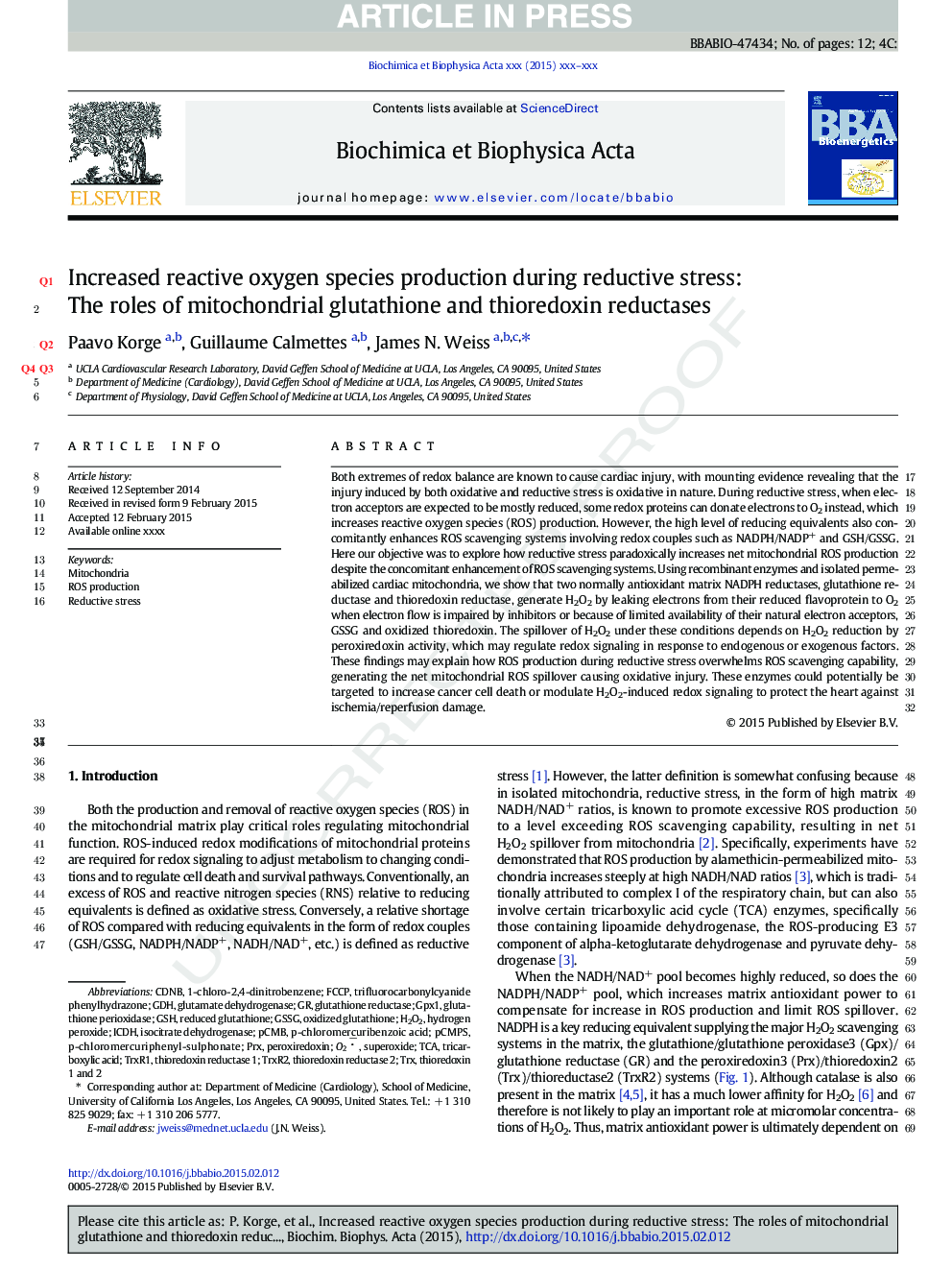| کد مقاله | کد نشریه | سال انتشار | مقاله انگلیسی | نسخه تمام متن |
|---|---|---|---|---|
| 8298713 | 1537041 | 2015 | 12 صفحه PDF | دانلود رایگان |
عنوان انگلیسی مقاله ISI
Increased reactive oxygen species production during reductive stress: The roles of mitochondrial glutathione and thioredoxin reductases
ترجمه فارسی عنوان
افزایش تولید گونه های اکسیژن واکنشی در طول استرس کاهش می یابد: نقش گلوتاتیون میتوکندری و تیورودوکسین ردوکتاز
دانلود مقاله + سفارش ترجمه
دانلود مقاله ISI انگلیسی
رایگان برای ایرانیان
کلمات کلیدی
TrxR1FCCPTrxCDNBGPx1PRXTrxR2ICDHGSSGpCMBp-chloromercuribenzoic acidGDHGSHTCAtrifluorocarbonylcyanide phenylhydrazoneO2−•PCMPS1-chloro-2,4-dinitrobenzene - 1-کلرو-2،4-دینیتروبنزنHydrogen peroxide - آب اکسیژنهReductive stress - استرس کاهش دهندهtricarboxylic acid - اسید تری کربوکسیلیکIsocitrate dehydrogenase - ایزوسیترات دهیدروژنازThioredoxin reductase 1 - تریوردوکسین ردوکتاز 1Thioredoxin reductase 2 - تریوردوکسین ردوکتاز 2ROS production - تولید ROSSuperoxide - سوپر اکسیدMitochondria - میتوکندریاH2O2 - هیدروژن پراکسیدPeroxiredoxin - پروکسی ردوکسینreduced glutathione - کاهش گلوتاتیونoxidized glutathione - گلوتاتیون اکسید شدهglutathione reductase - گلوتاتیون ردوکتازglutamate dehydrogenase - گلوتامات دهیدروژناز
موضوعات مرتبط
علوم زیستی و بیوفناوری
علوم کشاورزی و بیولوژیک
دانش گیاه شناسی
چکیده انگلیسی
Both extremes of redox balance are known to cause cardiac injury, with mounting evidence revealing that the injury induced by both oxidative and reductive stress is oxidative in nature. During reductive stress, when electron acceptors are expected to be mostly reduced, some redox proteins can donate electrons to O2 instead, which increases reactive oxygen species (ROS) production. However, the high level of reducing equivalents also concomitantly enhances ROS scavenging systems involving redox couples such as NADPH/NADP+ and GSH/GSSG. Here our objective was to explore how reductive stress paradoxically increases net mitochondrial ROS production despite the concomitant enhancement of ROS scavenging systems. Using recombinant enzymes and isolated permeabilized cardiac mitochondria, we show that two normally antioxidant matrix NADPH reductases, glutathione reductase and thioredoxin reductase, generate H2O2 by leaking electrons from their reduced flavoprotein to O2 when electron flow is impaired by inhibitors or because of limited availability of their natural electron acceptors, GSSG and oxidized thioredoxin. The spillover of H2O2 under these conditions depends on H2O2 reduction by peroxiredoxin activity, which may regulate redox signaling in response to endogenous or exogenous factors. These findings may explain how ROS production during reductive stress overwhelms ROS scavenging capability, generating the net mitochondrial ROS spillover causing oxidative injury. These enzymes could potentially be targeted to increase cancer cell death or modulate H2O2-induced redox signaling to protect the heart against ischemia/reperfusion damage.
ناشر
Database: Elsevier - ScienceDirect (ساینس دایرکت)
Journal: Biochimica et Biophysica Acta (BBA) - Bioenergetics - Volume 1847, Issues 6â7, JuneâJuly 2015, Pages 514-525
Journal: Biochimica et Biophysica Acta (BBA) - Bioenergetics - Volume 1847, Issues 6â7, JuneâJuly 2015, Pages 514-525
نویسندگان
Paavo Korge, Guillaume Calmettes, James N. Weiss,
